Mesquite firewood is popular among smoked meat enthusiasts thanks to its sweet odor. But does this mean that it makes excellent firewood for indoor fires?
We’ll cover that at length in this article, plus other remarkable qualities of mesquite firewood.
What Is Mesquite?
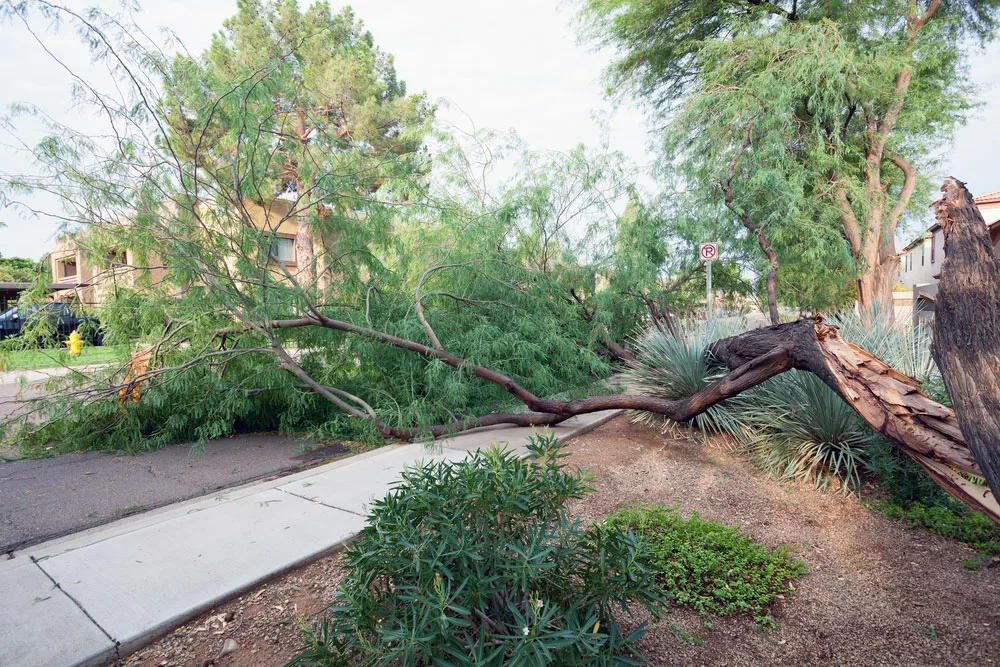
A fallen Mesquite Tree.
Mesquite is a deciduous hardwood meaning it sheds its leaves annually. It’s prevalent in the Southern USA and parts of Mexico. You will most likely not find it in the Northern parts of the US as the climate there is unfavorable.
Also, the tree barely grows tall in most cases, especially when there’s an insufficient water supply. But some can reach up to 50 feet if the soils are good and there’s plentiful water.
It finds great use in woodworking applications and is also a quality firewood tree, as we’ll find out below.
Burn Qualities of Mesquite Firewood
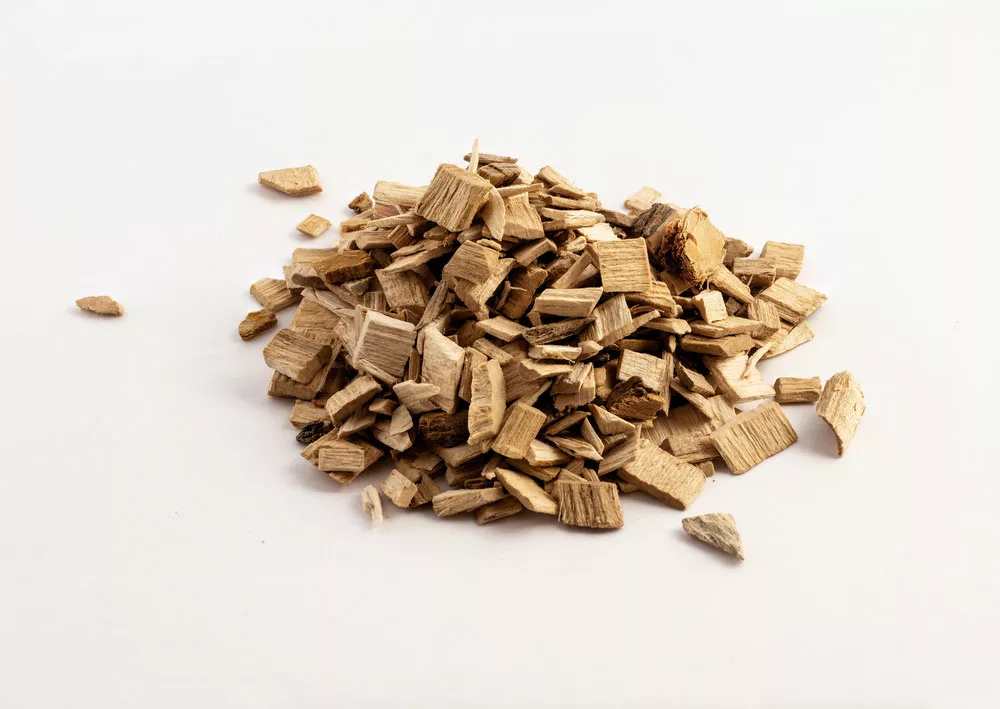
Mesquite firewood chips for use in BBQ.
What are some of the key burning features of mesquite firewood? Find out below.
Heat Output
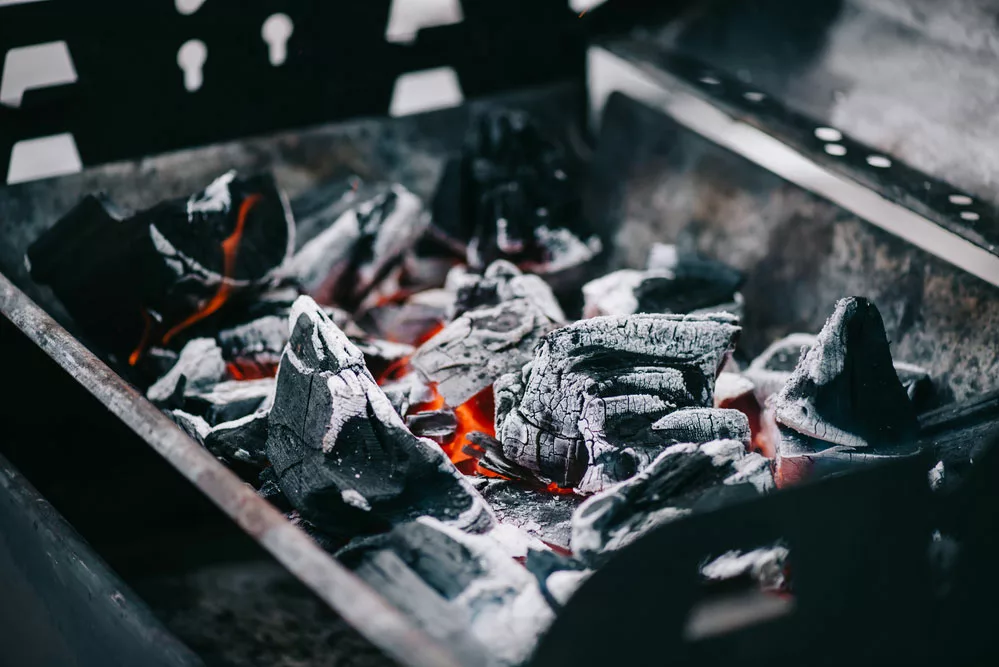
Hot Burning Coals
It’s a firewood tree species hence a cord of its firewood provides a relatively high heat output of 28 million BTU. Only Osage Orange firewood is hotter than this.
However, due to the high heat yield, you need to use less firewood than you would with other less hot firewood species. Alternatively, you can use the firewood for outdoor fires, such as campfires requiring high-quality trees.
Smoke Production
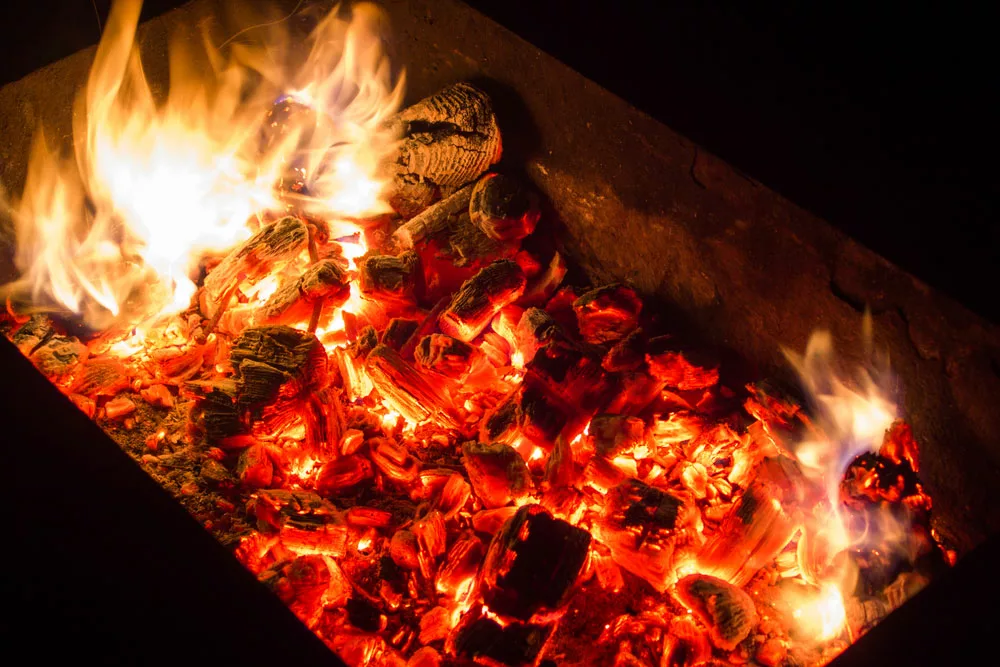
BBQ Coals
When properly dried, mesquite firewood will not produce a lot of smoke. It’s smoky firewood despite being hardwood. You can use it to add flavor to your meat.
Is it ideal for indoor use? If you’re wary of smoky firewood, it would not be a great idea to use mesquite firewood indoors.
Seasoning Duration
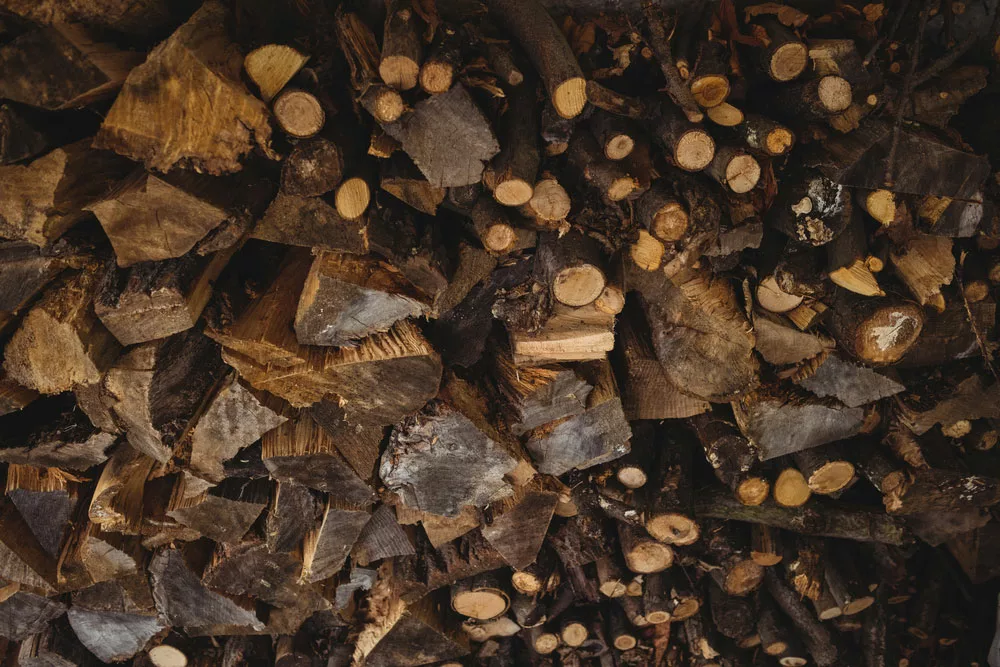
A firewood stack
Hardwoods take longer than softwoods to season fully, but Mesquite will surprisingly dry quickly under the right conditions. You primarily need to stack it properly, and if there’s excellent sunlight and wind supply, it’ll dry in about six months.
Nonetheless, the rule of thumb to realize this fast drying is that it should not contact moisture as this will even cause rotting.
Burning Odor
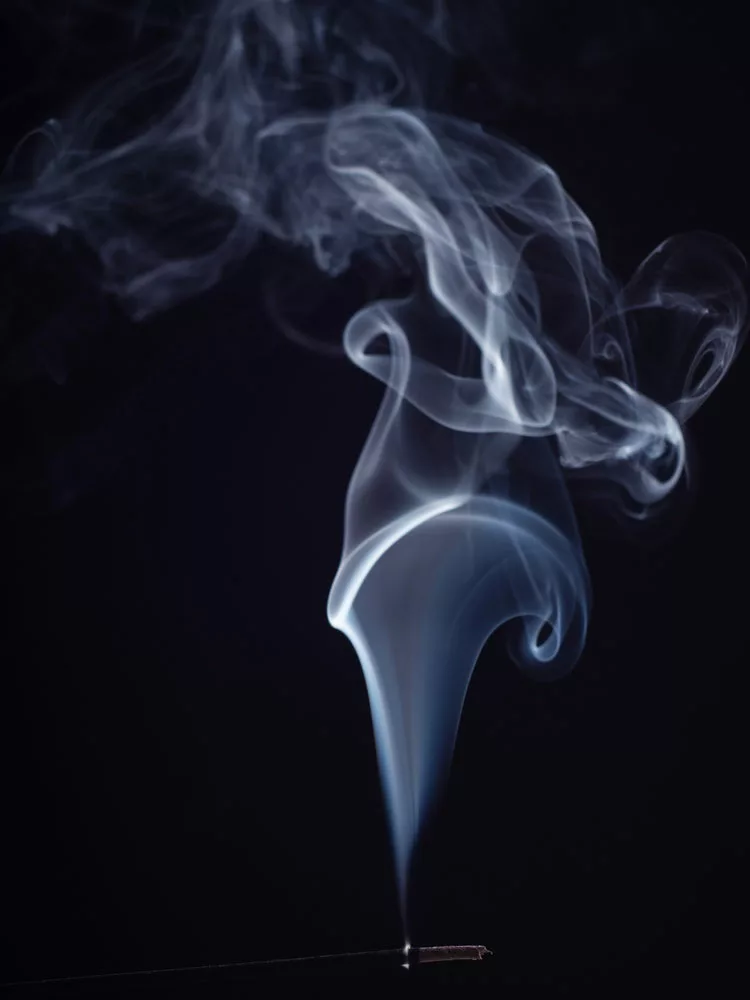
Mesquite has a sweet-smelling odor when burning.
It is popular firewood in barbeques and smoking pork in the wild thanks to its sweet odor. Hence, you can use it instead of other sweet-smelling firewood such as Pearwod, Applewood, and Cherrywood.
Splitting Difficulty
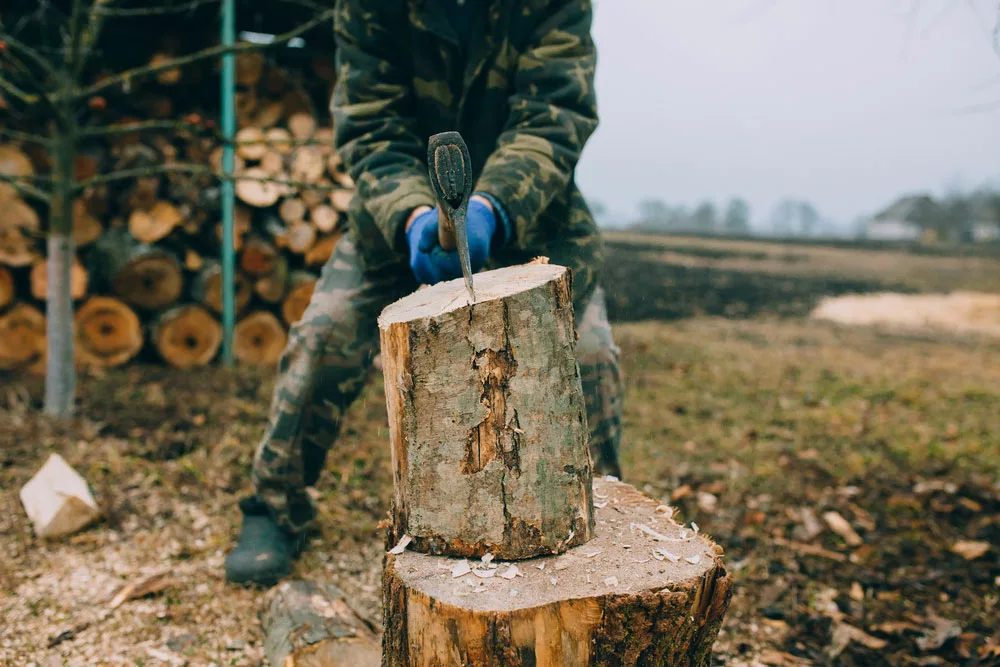
A man is splitting a log.
You may find it challenging to split mesquite firewood with a splitting ax primarily because of its twisting branches.
Hence, we can classify it as quite difficult to split. However, you can consider using a powered chainsaw to reduce it to fine bits, especially if you’re dealing with a large firewood volume.
But, you may require many trees to make up a cord, as Mesquites don’t grow as tall or thick as other firewood trees.
Coals Quality
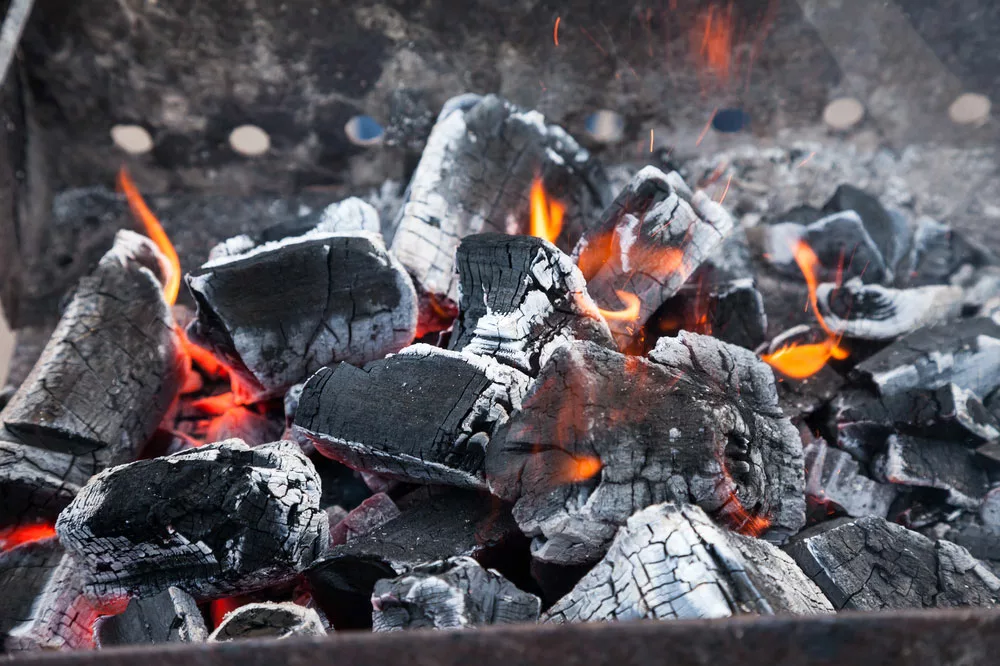
Firewood Coals
Mesquite is a high-density tree. Thus, it produces top-quality slow-burning coals. Hence, it’s among the best trees for a campfire as its fire can stay alive for an extensive duration. Lastly, it yields little ash as it burns quite slowly, making it a clean option for your wood stove.
Creosote Production
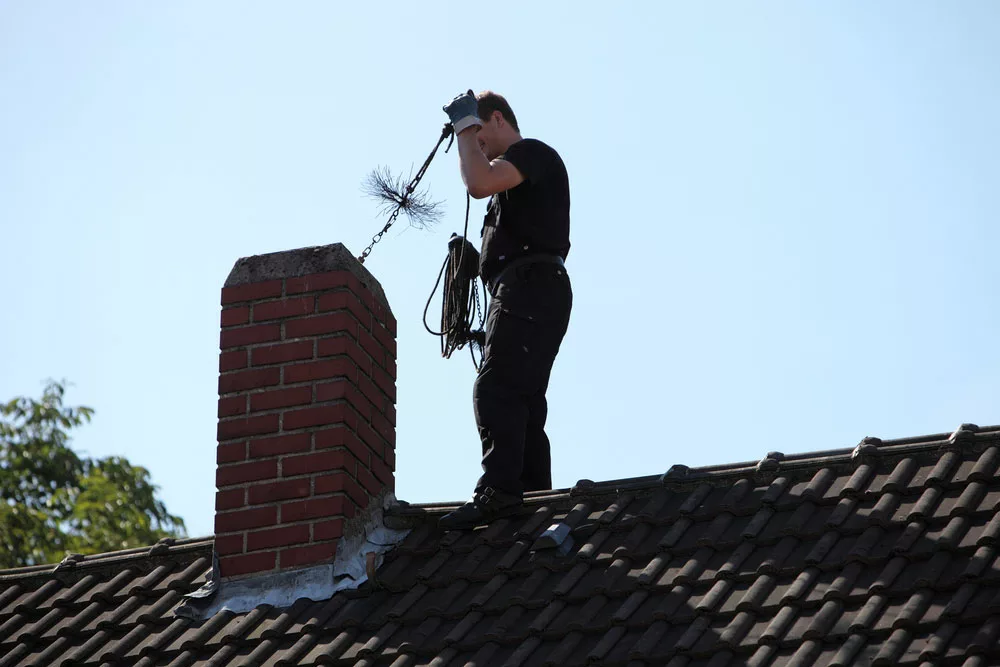
Cleaning the Chimney
Mesquite produces little creosote fundamentally because it’s hardwood. However, drying green Mesquite will yield excessive smoke and creosote.
The rule of thumb when using any firewood is to regularly clean your chimney to remove the creosote particles that are likely to attach.
Different Types of Mesquite Firewood
Let’s explore the three main Mesquite species.
Honey Mesquite
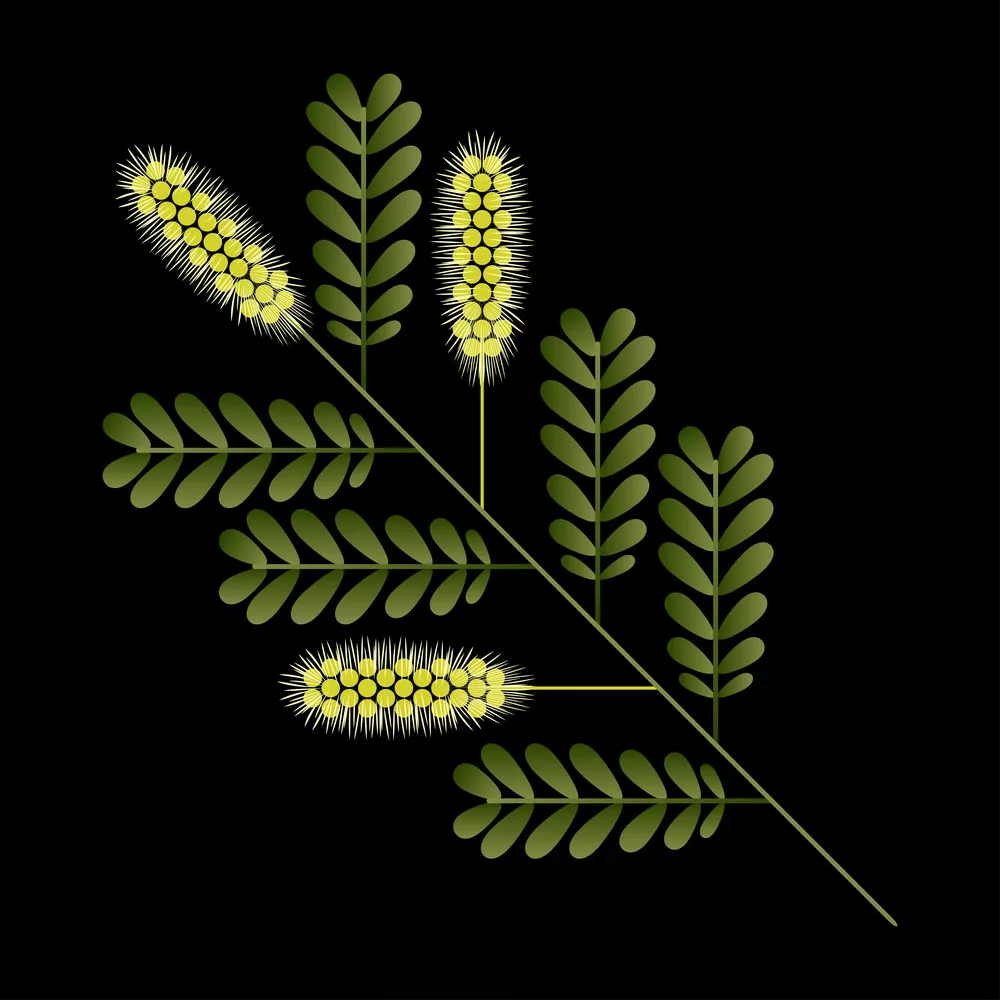
A honey Mesquite Branch
It is native to the Southern Parts of the US and Northern Mexico in areas with limited water supply, as these are the tree’s ideal growing conditions. You can identify the Honey Mesquite species from its seedy ponds and thorny appearance.
They also sport a reddish prickly bark.
Velvet Mesquite
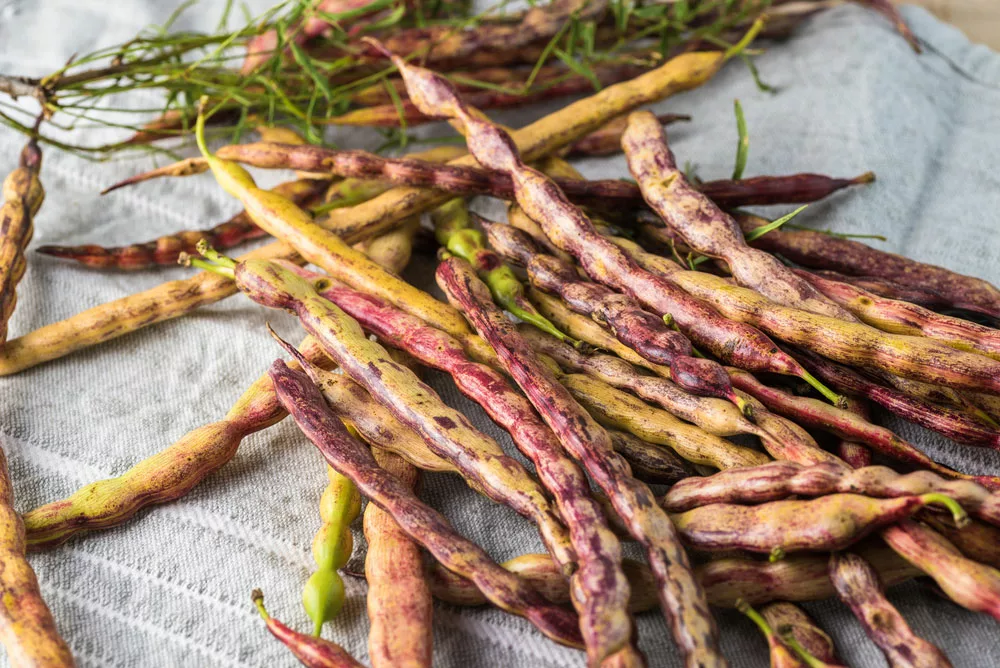
Mesquite Beans
It’s a tree native to the Mojave Desert in the southern part of the US. Unlike the Honey Mesquite, this species has dark bark and take about 150 years to reach full maturity. However, they do not grow too tall, with the tree’s maximum height being 25 years.
Screwbean Mesquite
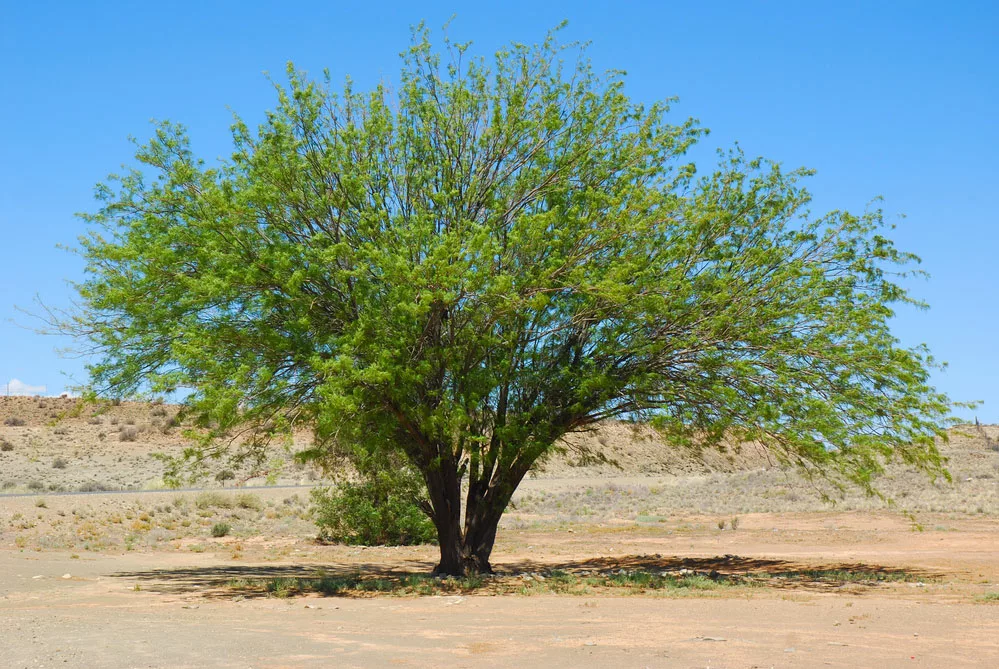
A screwbean Mesquite Tree
The species does well in US deserts along areas with a water supply, such as near the seasonal river bends. It derives its name from the screwbean shape of its fruits.
Comparison to Other Woods
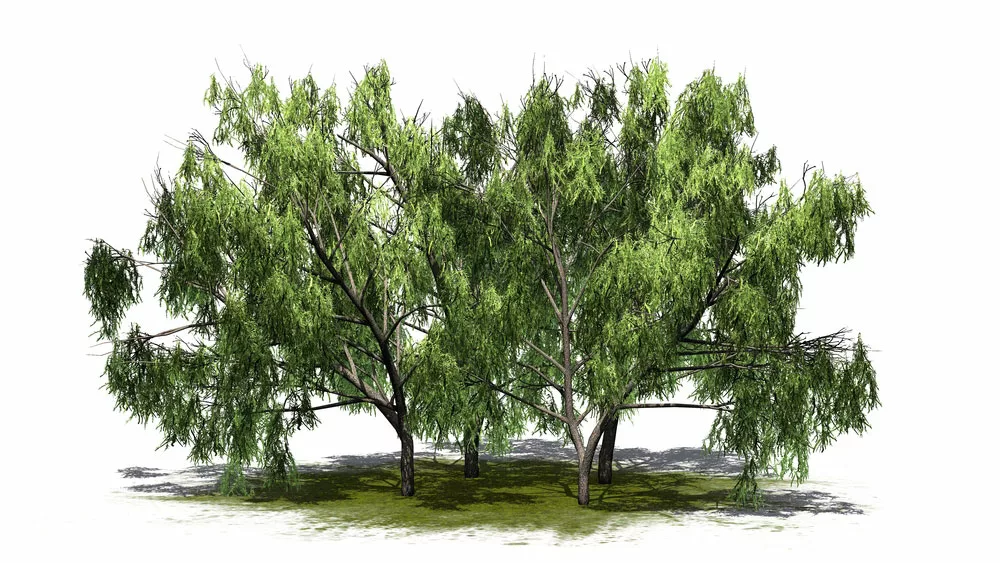
Mesquite Trees.
Below, we’ll look at how Mesquite ranks compared to other common firewood tree species.
| Firewood Tree | Heat Output in BTUs per Cord | Splitting Difficulty | Coal Quality | Overall Firewood Quality |
| Green Ash | 20 | Easy | Good | Exemplary |
| Pine | 22 | Easy | Poor | Poor |
| Maple | 25 | Easy | Exemplary | Exemplary |
| Bur Oak | 26 | Easy | Good | Exemplary |
| Mesquite | 28 | Moderate | Good | Exemplary |
| Osage Orange | 32.9 | Easy | Exemplary | Exemplary |
FAQs
Can you burn mesquite wood in a fire pit?
Mesquite makes excellent firewood for your outdoor firepit thanks to its high heat output. Also, because it produces a high smoke output, it’s best to burn it outside rather than indoors.
Can you burn mesquite wood in a wood stove?
You can also burn mesquite wood in a wood stove, but you must take precautionary measures to deter the smoke. For instance, installing a glass screen is a brilliant idea to prevent smoke from filling the house.
How to identify a mesquite tree?
The best way to identify Mesquite is to check if it features thorns on its bark and branches. Secondly, it also has pond fruits and barely grows tall.
Conclusion
In a nutshell, mesquite wood is good for an indoor fire, but it’s primarily ideal for an outdoor fire, especially for smoking meat. It also has moderate splitting difficulty, but it gives high-quality coals.
